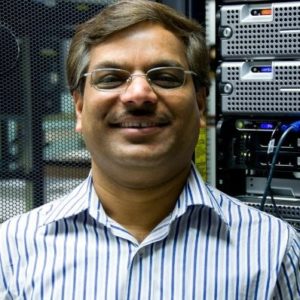
Rajkumar Buyya
Director, Cloud Computing and Distributed Systems (CLOUDS) Lab, The University of Melbourne, Australia
CEO, Manjrasoft Pvt Ltd, Melbourne, Australia
Topic: Neoteric Frontiers in Cloud and Edge Computing
Dr. Rajkumar Buyya is a Redmond Barry Distinguished Professor and Director of the Cloud Computing and Distributed Systems (CLOUDS) Laboratory at the University of Melbourne, Australia. He is also serving as the founding CEO of Manjrasoft, a spin-off company of the University, commercializing its innovations in Cloud Computing. He has authored over 750 publications and seven text books including “Mastering Cloud Computing” published by McGraw Hill, China Machine Press, and Morgan Kaufmann for Indian, Chinese and international markets respectively. Dr. Buyya is one of the highly cited authors in computer science and software engineering worldwide (h-index=138, g-index=307, 101,600+ citations). “A Scientometric Analysis of Cloud Computing Literature” by German scientists ranked Dr. Buyya as the World’s Top-Cited (#1) Author and the World’s Most-Productive (#1) Author in Cloud Computing. Dr. Buyya is recognised as Web of Science “Highly Cited Researcher” for four consecutive years since 2016, IEEE Fellow, Scopus Researcher of the Year 2017 with Excellence in Innovative Research Award by Elsevier, and the “Best of the World”, in Computing Systems field, by The Australian 2019 Research Review.
Dr. Buyya is recipient of “2009 IEEE Medal for Excellence in Scalable Computing” from the IEEE Computer Society TCSC. Manjrasoft’s Aneka Cloud technology developed under his leadership has received “Frost & Sullivan New Product Innovation Award”. He is currently serving as Editor-in-Chief of Software: Practice and Experience, a long standing journal in the field established ~50 years ago. For further information on Dr.Buyya, please visit his cyberhome: www.buyya.com
Abstract:
Computing is being transformed to a model consisting of services that are delivered in a manner
similar to utilities such as water, electricity, gas, and telephony. In such a model, users access
services based on their requirements without regard to where the services are hosted or how they
are delivered. Cloud computing paradigm has turned this vision of "computing utilities" into a
reality. It offers infrastructure, platform, and software as services, which are made available to
consumers as subscription-oriented services. Cloud application platforms need to offer (1) APIs
and tools for rapid creation of elastic applications and (2) a runtime system for deployment of
applications on geographically distributed computing infrastructure in a seamless manner.
The Internet of Things (IoT) paradigm enables seamless integration of cyber-and-physical
worlds and opening up opportunities for creating new class of applications for domains such as
smart cities and smart healthcare. The emerging Fog/Edge computing paradigm is extends Cloud
computing model to edge resources for latency sensitive IoT applications with a seamless
integration of network-wide resources all the way from edge to the Cloud.
This keynote presentation will cover (a) 21st century vision of computing and identifies various
IT paradigms promising to deliver the vision of computing utilities; (b) innovative architecture
for creating elastic Clouds integrating edge resources and managed Clouds, (c) Aneka 5G, a
Cloud Application Platform, for rapid development of Cloud/Big Data applications and their
deployment on private/public Clouds with resource provisioning driven by SLAs, (d) a novel
FogBus software framework with Blockchain-based data-integrity management for facilitating
end-to-end IoT-Fog/Edge-Cloud integration for execution of sensitive IoT applications, (e)
experimental results on deploying Cloud and Big Data/ IoT applications in engineering, and
health care (e.g., COVID-19), deep learning/Artificial intelligence (AI), satellite image
processing, natural language processing (mining COVID-19 research literature for new insights)
and smart cities on elastic Clouds; and (f) directions for delivering our 21st century vision along
with pathways for future research in Cloud and Edge/Fog computing.
